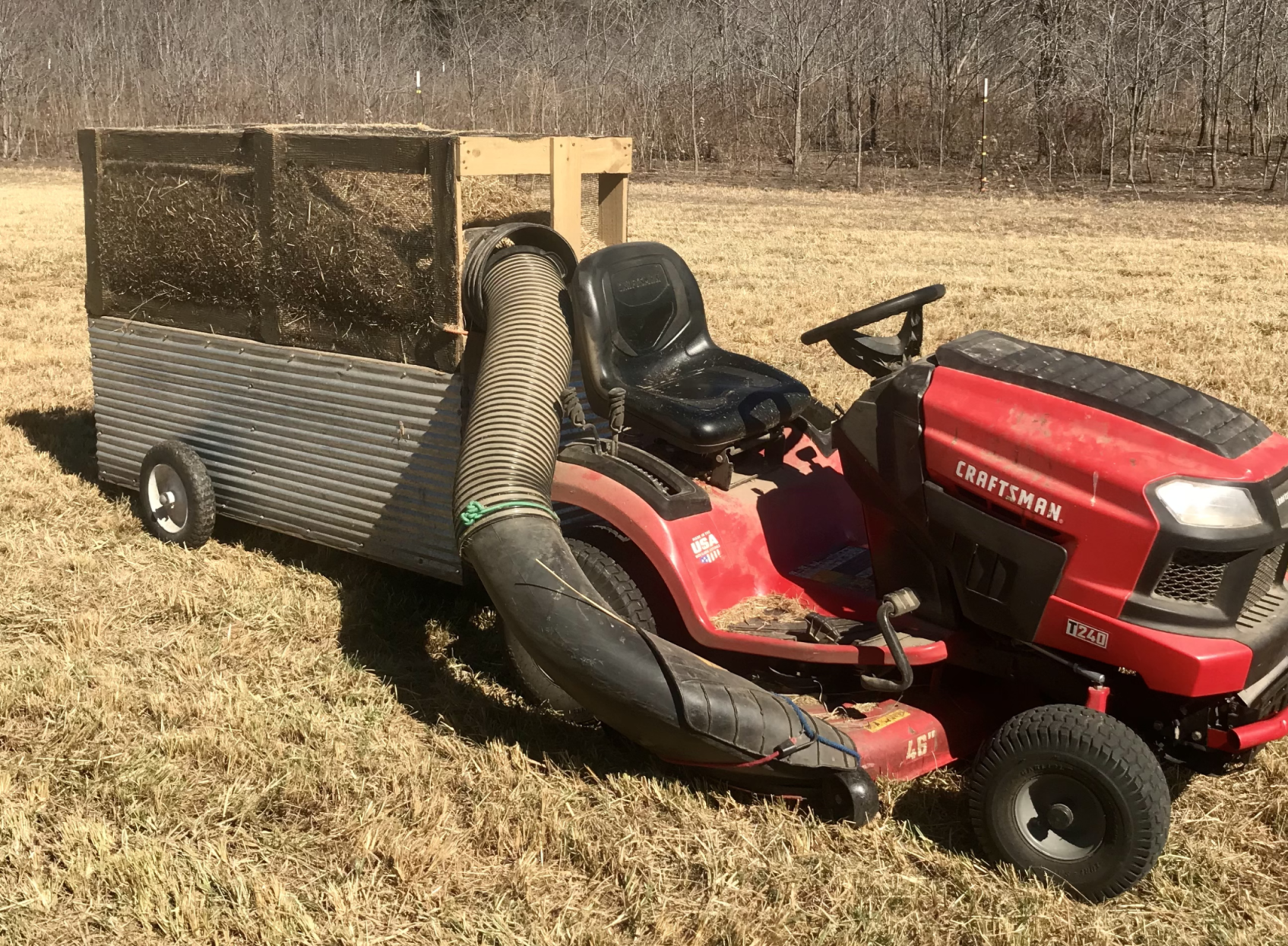Starting February 15, 2022, we will no longer purchase or eat any food from the grocery store (except salt & baking powder). Instead, we are choosing to experience what it is like to raise and forage for all of our food. This means EVERYTHING: flour, oil, honey, spices, cheese, fruits, nuts - Follow our journey and learn about feeding yourselves

If you’ve decided to use the mulch garden method, then devising a quick, convenient method of collecting mulch soon becomes a high priority, especially with larger and more numerous garden beds. We’ll review some of the methods we’ve used and discuss key elements to incorporate when designing a system that works for you.

If you are only going to apply mulch to a few garden beds, then there is no need to waste time and money constructing an elaborate system. If you have access to a lawn mower, rake, and wheelbarrow; those are all the tools you need. The only downside to using a lawnmower is you are only able to cut short grass. If you wish to collect both dry and fresh grass, you’ll want to mow your mulch in very early spring before the pasture or lawn has filled with green grass.
Even if you don’t have a mower with a bag-style collector, you can retrace your steps, raking the cut grass and picking it up and transporting it in a wheelbarrow, cart, trailer, or pickup truck bed. Picking up and handling the grass will be much easier if allowed to dry in the sun for a day or more – just keep an eye on the weather for rain or even strong winds.
If your mower has a bag attachment for catching cut grass, even better! You’ll just want to empty this periodically into a wheelbarrow, wagon, or other larger receptacle for easy and less frequent transport to the garden. The grass clippings get mulched quite fine in these bags, and the clippings can clump if too moist.
If you don’t have a mower, or if you don’t have a large enough area to mow, most towns make available municipal yard waste a couple of times each year. Be aware that municipal yard waste often contains unwanted items such as plastic bags and lots of sticks you will want to sort out of your mulch.
Alternatively, you might ask neighbors if you can pick up their bagged leaves. Some might be skeptical of their good fortune at first, but most will be delighted to allow you their yard trash! You could even re-pay the favor by paying them back in garden produce and winning an ally in the neighborhood.
From here, you can increase your grass catchment capacity and speed by employing a “lawn sweeper”, which is a pull-behind enclosed trailer equipped with a built-in rotating sweeper brush to catch and collect lawn clippings. You can attach these to a riding mower, or again leave the grass clippings to lay for a day or two, and attach the lawn sweeper to a 4-wheeler or even a vehicle. These range from just over $200 - $500! They range in width from 26 - 52 inches, and so can catch a greater volume than the bags that come on a mower. They can be found at stores like Lowes and Tractor Supply. If your back hurts just thinking about the bending and lifting of using a rake and wheelbarrow, then investing in one of these might make mulching possible!
And finally, ladies & gentlemen, the mulch catcher you’ve all been waiting for: the Cadillac of mulch catchers: The extra-large-capacity home-built riding mower pull-behind mulch trailer.
If you have a riding mower, each make and model comes with its own custom bagger attachment. These range from $300-$500, yet still have a relatively limited capacity in terms of volume of mulch caught.

In order to save time, we recommend making a light-weight pull-behind trailer. For a 3-4’x50’ garden bed, we can catch all the mulch we need to pile it 10” high in just three trips around the pasture! Ours is sided with light-weight metal roofing, which is also weather resistant.
Because each model of riding mower is different, you will have do come up with a design that bests suits your mower, but in general, here is how Johnny made ours:


Starting February 15, 2022, we will no longer purchase or eat any food from the grocery store (except salt & baking powder). Instead, we are choosing to experience what it is like to raise and forage for all of our food. This means EVERYTHING: flour, oil, honey, spices, cheese, fruits, nuts - Follow our journey and learn about feeding yourselves
RESOURCE
Copyright © 2024 Barefoot Farm
Terms & Condition . Services . Careers
